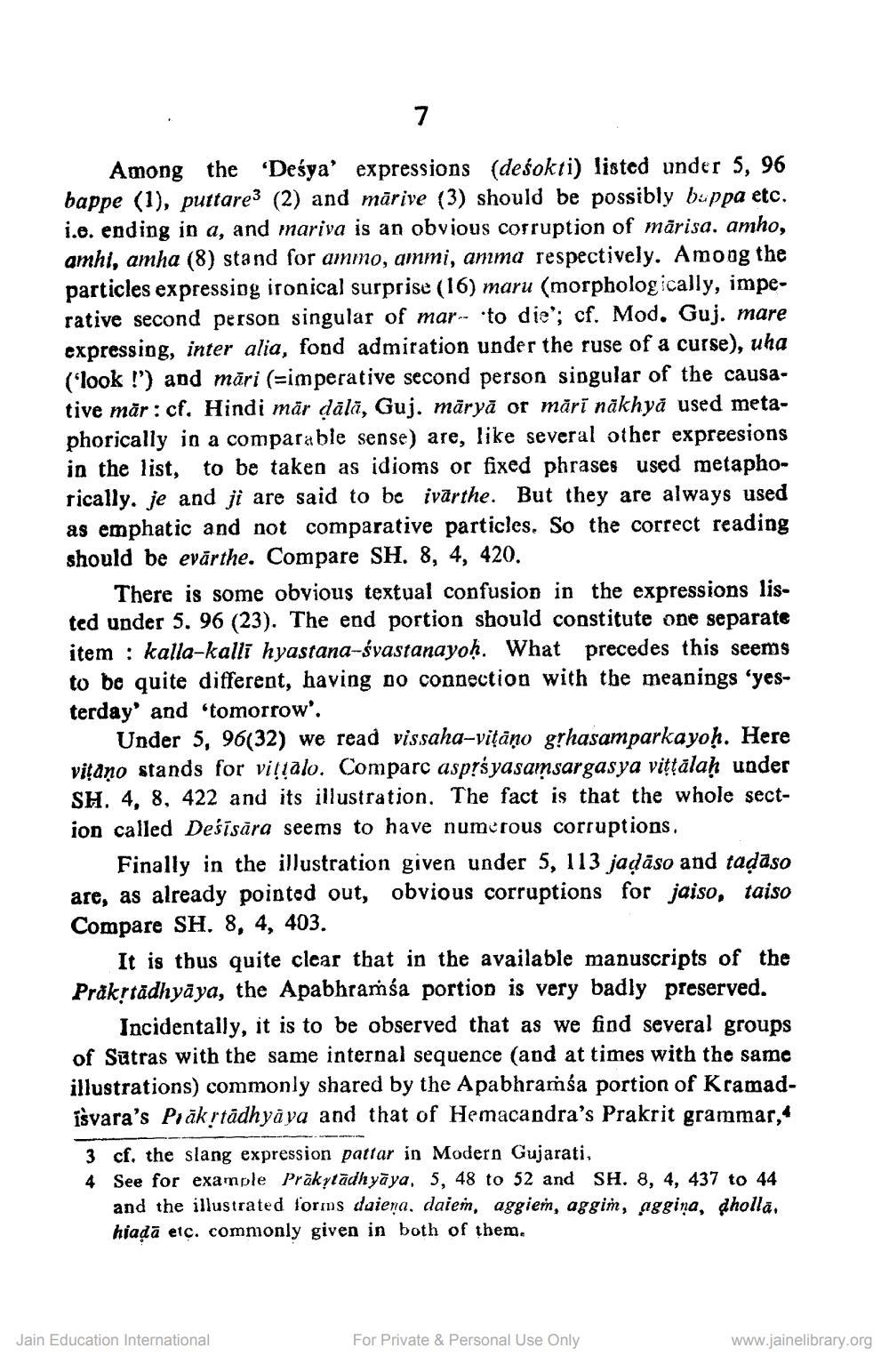Book Title: Prakritadhyaya Author(s): Kramdishwar, Satyaranjan Banerjee, Dalsukh Malvania, H C Bhayani Publisher: Prakrit Text Society Ahmedabad View full book textPage 8
________________ Among the 'Deśya' expressions (dešokti) listed under 5, 96 bappe (1), puttare3 (2) and mārive (3) should be possibly buppa etc. i.e. ending in a, and mariva is an obvious corruption of mārisa. amho, amhi, amha (8) stand for ammo, ammi, amma respectively. Among the particles expressing ironical surprise (16) maru (morphologically, imperative second person singular of mar- to die'; cf. Mod. Guj. mare expressing, inter alia, fond admiration under the ruse of a curse), uha ('look !) and māri (=imperative second person singular of the causative mār: cf. Hindi mär dālā, Guj. māryā or mărī nākhyå used metaphorically in a comparable sense) are, like several other expreesions in the list, to be taken as idioms or fixed phrases used metaphorically. je and ji are said to be ivārthe. But they are always used as emphatic and not comparative particles. So the correct reading should be evărthe. Compare SH. 8, 4, 420. There is some obvious textual confusion in the expressions listed under 5. 96 (23). The end portion should constitute one separate item : kalla-kalli hyastana-svastanayoḥ. What precedes this seems to be quite different, having no connection with the meanings 'yesterday' and 'tomorrow'. Under 5, 96(32) we read vissaha-vițāņo gļhasamparkayoḥ. Here viļāņo stands for visžalo. Comparc aspršyasamsargasya vitýālaḥ under SH. 4. 8. 422 and its illustration. The fact is that the whole section called Deśísāra seems to have numerous corruptions. Finally in the illustration given under 5, 113 jadāso and tadaso are, as already pointed out, obvious corruptions for jaiso, taiso Compare SH, 8, 4, 403. It is thus quite clear that in the available manuscripts of the Pråkstādhyāya, the Apabhraíśa portion is very badly preserved. Incidentally, it is to be observed that as we find several groups of Sutras with the same internal sequence (and at times with the same illustrations) commonly shared by the Apabhramśa portion of Kramadišvara's Prāk stādhyāya and that of Hemacandra's Prakrit grammar, 3 cf. the slang expression pattar in Modern Gujarati, 4 See for example Prākytādhyāya, 5, 48 to 52 and SH. 8, 4, 437 to 44 and the illustrated forms daiena, daiem, aggień, aggin, aggina, dholla, hiadā etc. commonly given in both of them. Jain Education International For Private & Personal Use Only www.jainelibrary.orgPage Navigation
1 ... 6 7 8 9 10 11 12 13 14 15 16 17 18 19 20 21 22 23 24 25 26 27 28 29 30 31 32 33 34 35 36 37 38 39 40 41 42 43 44 45 46 47 48 49 50 51 52 53 54 55 56 57 58 59 60 61 62 63 64 65 66 67 68 69 70 71 72 73 74 75 76 77 78 79 80 81 82 ... 140
